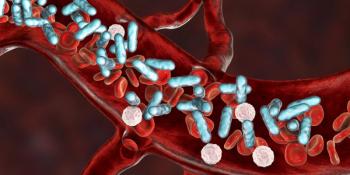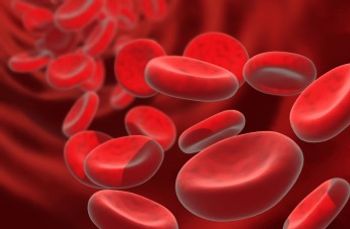
Oncology NEWS International
- Oncology NEWS International Vol 7 No 7
- Volume 7
- Issue 7
Virtual Reality Exhibit Simulates Cancer Fatigue
LOS ANGELES--Visitors to the Exhibitor’s Hall at this year’s ASCO meeting had the opportunity to walk in the shoes of a patient with cancer-related fatigue at Ortho-Biotech’s In My Steps virtual reality experience, developed in cooperation with cancer patients and the Fatigue Coalition.
LOS ANGELES--Visitors to the Exhibitors Hall at this years ASCO meeting had the opportunity to walk in the shoes of a patient with cancer-related fatigue at Ortho-Biotechs In My Steps virtual reality experience, developed in cooperation with cancer patients and the Fatigue Coalition.
For this virtual journey, you sit in a special chair outfitted with pedals. A technician fits you with a virtual reality helmet (see Figure) that places you in the simulated house, and in the shoes, of a fatigued cancer patient. Using the pedals to "walk" and a hand-guided pointer to direct your movements, you guide the patient through simple tasks made challenging by the resistant pedals that slow your steps. Just making a cup of tea becomes maddeningly difficult as the kettle whistles, the doorbell rings, and an impatient delivery man leaves before you can reach the door. The experience, of course, cannot simulate the debilitating fatigue that many cancer patients describe. In one survey, 29% said they had difficulty just getting out of bed, and 24% were too tired to eat. It does, however, reveal the frustrations such patients feel.
In My Steps is traveling to cancer centers as part of 1-day fatigue awareness workshops for physicians and nurses. To schedule an event, call 1-800-776-2748.
Articles in this issue
over 27 years ago
Calling the National Cancer Instituteover 27 years ago
Six Cycles of AT Found Safe in Advanced Breast Cancerover 27 years ago
New Drug Promising in Advanced Pancreatic Cancerover 27 years ago
Herceptin/Chemo Effective in Metastatic Breast Cancerover 27 years ago
New Director of AIDS Researchover 27 years ago
Exhibit Explores Healing Power of Creating Artworkover 27 years ago
Update on Trials of Thrombopoietin for Platelet Recoveryover 27 years ago
Amifostine Reduces Xerostomia After RT for Head and Neck Cancerover 27 years ago
National Survey Documents Gap in Quality of HIV/AIDS CareNewsletter
Stay up to date on recent advances in the multidisciplinary approach to cancer.

















































































